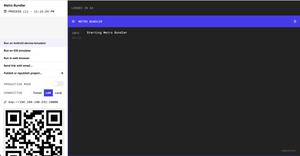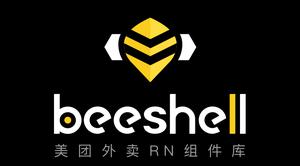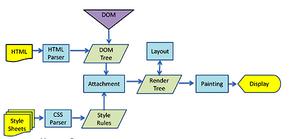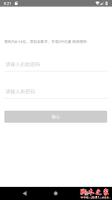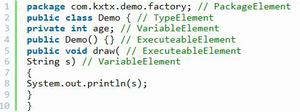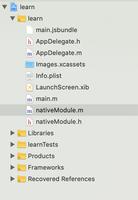React Native 列表的总结

FlatList和SectionList都是React Native中高性能的列表组件。这些新的列表组件在性能方面都有了极大的提升, 其中最主要的一个是无论列表有多少行,它的内存使用都是常数级的。他们有着共同的特点:
- 完全跨平台。
- 行组件显示或隐藏时可配置回调事件。
- 支持单独的头部组件。
- 支持单独的尾部组件。
- 支持自定义行间分隔线。
- 支持下拉刷新。
- 支持上拉加载。
实质两者都是基于VirtualizedList组件的封装,因此需要注意:
- 当某行滑出渲染区域之外后,其内部状态将不会保留。请确保你在行组件以外的地方保留了数据。
- 为了优化内存占用同时保持滑动的流畅,列表内容会在屏幕外异步绘制。这意味着如果用户滑动的速度超过渲染的速度,则会先看到空白的内容。这是为了优化不得不作出的妥协,而官方也在设法持续改进。
- 本组件继承自
PureComponent而非通常的Component,这意味着如果其props在浅比较中是相等的,则不会重新渲染。所以请先检查你的renderItem函数所依赖的props数据(包括data属性以及可能用到的父组件的state),如果是一个引用类型(Object或者数组都是引用类型),则需要先修改其引用地址(比如先复制到一个新的Object或者数组中),然后再修改其值,否则界面很可能不会刷新。 - 默认情况下每行都需要提供一个不重复的key属性。你也可以提供一个keyExtractor函数来生成key。
当然,他们也有着一些不同的特性,下面来主要说明一下。
FlatList
FlatList是一个高性能的简单列表组件,用于显示一个垂直的滚动列表,其中的元素之间结构近似而仅数据不同。
除了上述的特性外,FlatList还有:
- 支持水平布局模式。
- 支持跳转到指定行(ScrollToIndex)
FlatList更适于长列表数据,且元素个数可以增删。和ScrollView不同的是,FlatList并不立即渲染所有元素,而是优先渲染屏幕上可见的元素。
FlatList组件必须的两个属性是data和renderItem。data是列表的数据源,而renderItem则从数据源中逐个解析数据,然后返回一个设定好格式的组件来渲染。
简单的例子:
<FlatList
data={[{key: 'a'}, {key: 'b'}]}
renderItem={({item}) => <Text>{item.key}</Text>}
/>
FlatList主要属性
| 属性 | 说明 |
|---|---|
| data | 为了简化起见,data属性目前只支持普通数组。如果需要使用其他特殊数据结构,例如immutable数组,请直接使用更底层的VirtualizedList组件。 |
| getItemLayout | getItemLayout是一个可选的优化,用于避免动态测量内容尺寸的开销,不过前提是你可以提前知道内容的高度。如果你的行高是固定的,getItemLayout用起来就既高效又简单,类似下面这样:getItemLayout={(data, index) => ( {length: 行高, offset: 行高 * index, index} )} |
| keyExtractor | 此函数用于为给定的item生成一个不重复的key。Key的作用是使React能够区分同类元素的不同个体,以便在刷新时能够确定其变化的位置,减少重新渲染的开销。若不指定此函数,则默认抽取item.key作为key值。若item.key也不存在,则使用数组下标。 |
| renderItem | 根据行数据data渲染每一行的组件。 |
FlatList主要的方法
| 方法 | 说明 | 代码 |
|---|---|---|
| scrollTo() | 滚动到指定的x, y偏移处。第三个参数为是否启用平滑滚动动画。 | scrollTo(([y]: number), object, ([x]: number), ([animated]: boolean)); |
| scrollToEnd() | 滚动到视图底部(水平方向的视图则滚动到最右边)。加上动画参数scrollToEnd({animated: true})则启用平滑滚动动画,或是调用scrollToEnd({animated: false})来立即跳转。如果不使用参数,则animated选项默认启用。 | scrollToEnd(([options]: object)); |
| flashScrollIndicators() | 短暂地显示滚动指示器。 | flashScrollIndicators(); |
实例:电影列表
以下是获取豆瓣电影数据并展示成列表的实例。
import React, {Component} from "react";
import {ActivityIndicator, FlatList, Image, StyleSheet, Text, View} from "react-native";
const REQUEST_URL =
"http://api.douban.com/v2/movie/top250?count=50";
export class SampleAppMovies extends Component {
static navigationOptions = {
title: '电影列表页 ',
headerStyle: {
backgroundColor: '#8bc9ff',
}
};
constructor(props) {
super(props);
this.state = {
data: [],
loaded: false
};
// 在ES6中,如果在自定义的函数里使用了this关键字,则需要对其进行“绑定”操作,否则this的指向会变为空
// 像下面这行代码一样,在constructor中使用bind是其中一种做法(还有一些其他做法,如使用箭头函数等)
this.fetchData = this.fetchData.bind(this);
}
componentDidMount() {
this.fetchData();
}
fetchData() {
fetch(REQUEST_URL)
.then(response => response.json())
.then(responseData => {
this.setState({
data: this.state.data.concat(responseData.subjects),
loaded: true
});
});
}
static renderLoadingView() {
return (
<View style={styles.container}>
<ActivityIndicator size="large" color="#8bc9ff"/>
</View>
);
}
static renderMovie({item}) {
// { item }是一种“解构”写法,请阅读ES2015语法的相关文档
// item也是FlatList中固定的参数名,请阅读FlatList的相关文档
return (
<View style={styles.container}>
<Image
source={{uri: item.images.medium}}
style={styles.thumbnail}/>
<View style={styles.rightContainer}>
<Text style={styles.title}>{item.title}</Text>
<Text style={styles.year}>{item.year}</Text>
<Text style={styles.introduce}>{"评分:"}
<Text
style={styles.ratingNum}>{item.rating.average === 0 ? "暂无评价" : item.rating.average}
</Text>
</Text>
<Text numberOfLines={1} style={styles.introduce}>{"导演:"}
<Text style={styles.info}>{item.directors[0].name}</Text>
</Text>
<Text numberOfLines={1} style={styles.introduce}>{"演员:"}
<Text style={styles.info}>{item.casts[0].name + " "}</Text>
<Text style={styles.info}>{item.casts[1].name + " "}</Text>
<Text style={styles.info}>{item.casts[2].name}</Text>
</Text>
</View>
</View>
);
}
render() {
if (!this.state.loaded) {
return SampleAppMovies.renderLoadingView();
}
return (
<FlatList
data={this.state.data}
ItemSeparatorComponent={ItemDivideComponent}
renderItem={SampleAppMovies.renderMovie}
style={styles.list}
keyExtractor={(item, index) => item.id}
/>
);
}
}
class ItemDivideComponent extends Component {
render() {
return (
<View style={{height: 0.5, backgroundColor: 'gray'}}/>
);
}
}
const styles = StyleSheet.create({
container: {
flex: 1,
flexDirection: "row",
justifyContent: "center",
backgroundColor: "#F5FCFF",
padding: 5
},
rightContainer: {
flex: 1,
marginLeft: 10,
flexDirection: 'column',
},
title: {
color: '#000',
fontWeight: 'bold',
fontSize: 20,
marginBottom: 9,
justifyContent: 'flex-start',
},
year: {
fontSize: 15,
marginBottom: 5,
},
introduce: {
flex: 1,
fontSize: 14,
color: '#000',
marginBottom: 5,
},
ratingNum: {
flex: 1,
fontSize: 20,
fontWeight: 'bold',
color: '#ffad24'
},
info: {
fontSize: 16,
color: '#000',
marginRight: 3,
marginBottom: 5,
},
thumbnail: {
width: 90,
height: 145
},
list: {
backgroundColor: "#FFF"
}
});
SectionList
如果要渲染的是一组需要分组的数据,也许还带有分组标签的,那么SectionList将是个不错的选择。
SectionList是高性能的分组(section)列表组件。除了最一开始说明的共性外,它还有:
- 支持分组的头部组件。
- 支持分组的分隔线。
- 支持多种数据源结构。
简单的例子:
<SectionList
renderItem={({item}) => <ListItem title={item.title} />}
renderSectionHeader={({section}) => <H1 title={section.key} />}
sections={[ // homogeneous rendering between sections
{data: [...], key: ...},
{data: [...], key: ...},
{data: [...], key: ...},
]}
/>
<SectionList
sections={[ // heterogeneous rendering between sections
{data: [...], key: ..., renderItem: ...},
{data: [...], key: ..., renderItem: ...},
{data: [...], key: ..., renderItem: ...},
]}
/>
SectionList主要属性
| 属性 | 说明 |
|---|---|
| sections | 用来渲染的数据,类似于FlatList中的data属性。 |
| renderItem | 用来渲染每一个section中的每一个列表项的默认渲染器。可以在section级别上进行覆盖重写。必须返回一个react组件。 |
| keyExtractor | 此函数用于为给定的item生成一个不重复的key。Key的作用是使React能够区分同类元素的不同个体,以便在刷新时能够确定其变化的位置,减少重新渲染的开销。若不指定此函数,则默认抽取item.key作为key值。若item.key也不存在,则使用数组下标。注意这只设置了每行(item)的key,对于每个组(section)仍然需要另外设置key。 |
SectionList主要的方法
| 方法 | 说明 | 代码 |
|---|---|---|
| scrollToLocation() | 将可视区内位于特定sectionIndex 或 itemIndex (section内)位置的列表项,滚动到可视区的制定位置。 |
|
| recordInteraction() | 主动通知列表发生了一个事件,以使列表重新计算可视区域。比如说当waitForInteractions 为 true 并且用户没有滚动列表时,就可以调用这个方法。不过一般来说,当用户点击了一个列表项,或发生了一个导航动作时,我们就可以调用这个方法。 | recordInteraction(); |
| flashScrollIndicators() | 短暂地显示滚动指示器。 | flashScrollIndicators(); |
Valid
paramskeys are:
animated(boolean) - Whether the list should do an animation while scrolling. Defaults to true.
itemIndex(number) - Index within section for the item to scroll to. Required.
sectionIndex(number) - Index for section that contains the item to scroll to. Required.
viewOffset(number) - 一个以像素为单位,到最终位置偏移距离的固定值,比如为了弥补粘接的header所占据的空间。
viewPosition(number) - A value of 0 places the item specified by index at the top, 1 at the bottom, and 0.5 centered in the middle.
对于scrollToLocation(params);还有需要注意的地方: 如果没有设置getItemLayout或是onScrollToIndexFailed,就不能滚动到位于外部渲染区的位置。
SectionList注意点
对于计算滑动到那个点,可以使用scrollToLocation,
this.sectionList.scrollToLocation({
sectionIndex: 2,
itemIndex: 2,
viewOffset: 30,
})
....
<SectionList
ref={ref => this.sectionList = ref}
/>
但是如果要调用scrollToLocation的时候很可能页面还没渲染好,RN并不知道需要滚动到哪个位置,这个时候需要配合getItemLayout来使用。如果在sectionList中使用了该属性,RN会调用此方法计算列表中各项的显示位置,从而提前得知怎么处理滚动。
getItemLayout={(data, index) => ({
index,
offset: OFFSET_FROM_TOP,
length: ITEM_HEIGHT.
})
}
不过对于SectionList计算滚动到那个点的位置是比较困难的,要计算section头部高度,也要计算item的高度,同时如果存在下画线也需要考虑在内,这就如果滑动时可能会出现偏移。
在这里可以使用库rn-section-list-get-item-layout来帮助我们解决问题:
...
constructor(props) {
super(props)
this.getItemLayout = sectionListGetItemLayout({
// The height of the row with rowData at the given sectionIndex and rowIndex
getItemHeight: (rowData, sectionIndex, rowIndex) => sectionIndex === 0 ? 100 : 50,
// These four properties are optional
getSeparatorHeight: () => 1 / PixelRatio.get(), // The height of your separators
getSectionHeaderHeight: () => 20, // The height of your section headers
getSectionFooterHeight: () => 10, // The height of your section footers
listHeaderHeight: 40, // The height of your list header
})
}
...
实例:城市选择列表
import React, {Component} from 'react';
import {SectionList, StyleSheet, Text, ToastAndroid, TouchableOpacity, View} from 'react-native';
import sectionListGetItemLayout from 'react-native-section-list-get-item-layout'
import _ from 'lodash';
import cityData from '../json/city.json'
const ITEM_HEIGHT = 45;
//城市字母
const letters = _
.range('A'.charCodeAt(0), 'Z'.charCodeAt(0) + 1)
.map(n => String.fromCharCode(n).substr(0));
_.pull(letters, 'O', 'V');
//城市的数组
let city = [];
export class CitySelectList extends Component {
static navigationOptions = {
title: '列表页 ',
headerStyle: {
backgroundColor: '#8bc9ff',
}
};
constructor(props) {
super(props);
this.getItemLayout = sectionListGetItemLayout({
getItemHeight: (rowData, sectionIndex, rowIndex) => ITEM_HEIGHT,
getSeparatorHeight: () => 0,
getSectionHeaderHeight: () => ITEM_HEIGHT,
getSectionFooterHeight: () => 0,
listHeaderHeight: 0
})
}
componentWillMount() {
//把城市放到对应的字母中
for (let j = 0; j < letters.length; j++) {
let each = [];
for (let i = 0; i < cityData.CITIES.length; i++) {
if (letters[j] === cityData.CITIES[i].name_en.substr(0, 1)) {
each.push(cityData.CITIES[i].name);
}
}
let _city = {};
_city.key = letters[j];
_city.data = each;
city.push(_city)
}
//同步城市信息
this.setState({
data: city
})
}
//滑动到
scrollTo(index) {
this.sectionListRef.scrollToLocation({
animated: true,
sectionIndex: index,
itemIndex: 0,
viewPosition: 0,
viewOffset: ITEM_HEIGHT
});
}
//右侧城市首字母列表
renderLetters(letter, index) {
return (
<TouchableOpacity key={index} activeOpacity={0.6} onPress={() => {
this.scrollTo(index)
}}>
<Text style={styles.letterText}>{letter}</Text>
</TouchableOpacity>
)
}
//城市Item
renderCityItem(item) {
return (
<TouchableOpacity activeOpacity={0.6} onPress={() => {
ToastAndroid.show(item, ToastAndroid.SHORT)
}}>
<Text style={styles.item}>{item}</Text>
</TouchableOpacity>
)
}
render() {
return (
<View style={styles.container}>
<SectionList
sections={this.state.data}
initialNumToRender={383}
ref={ref => (this.sectionListRef = ref)}
renderItem={({item}) => this.renderCityItem(item)}
renderSectionHeader={({section}) => <Text style={styles.sectionHeader}>{section.key}</Text>}
keyExtractor={(item, index) => index}
refreshing={false}
getItemLayout={this.getItemLayout}
stickySectionHeadersEnabled={true}
showsVerticalScrollIndicator={false}
/>
<View style={styles.letters}>
{letters.map((letter, index) => this.renderLetters(letter, index))}
</View>
</View>
)
;
}
}
const styles = StyleSheet.create({
container: {
flex: 1
},
sectionHeader: {
paddingTop: 5,
paddingLeft: 10,
paddingRight: 10,
paddingBottom: 5,
fontSize: 18,
fontWeight: 'bold',
color: '#000',
height: ITEM_HEIGHT,
backgroundColor: '#8bc9ff',
},
item: {
padding: 10,
fontSize: 18,
height: ITEM_HEIGHT,
}, letters: {
position: 'absolute',
top: 0,
bottom: 0,
right: 10,
backgroundColor: 'transparent',
justifyContent: 'center',
alignItems: 'center',
}, letterText: {
padding: 2,
fontSize: 13,
}
});
来源:https://blog.csdn.net/kimi985566/article/details/85088889
以上是 React Native 列表的总结 的全部内容, 来源链接: utcz.com/z/381517.html

